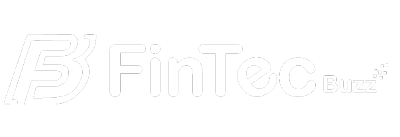Launching a new fintech card product often begins with a critical decision: Should you partner with a full-service program manager, or go directly to a bank? Conventional wisdom paints this choice simply—program management gets you to market quickly but with less control, while direct-to-bank provides greater control but takes longer. But from my experience leading compliance across numerous card programs, the reality is far more nuanced.
While most startups focus heavily on flexibility and speed, the real deciding factors should be your available capital and your in-house expertise—essentially, money and talent.
Capital: It’s More Than Just Funding
Many fintech startups assume that more funding automatically equates to smoother bank relationships. A well-funded startup with $30 million in reserves may assume they’ll face less scrutiny than one with $10 million. But banks evaluate potential partnerships more holistically than just capital reserves. They also look deeply into your operational sustainability, management stability, and clear paths to profitability. Even substantial financial backing won’t overcome issues such as unsustainable burn rates, high employee turnover, or unclear market strategies.
In other words, while capital is important, banks are equally concerned with how well you manage it. Money alone won’t convince banks you’re a safe partner—your business model and operational rigor matter just as much, if not more.
Talent: Your Real Strategic Advantage
When choosing between program management and direct-to-bank, talent often becomes the real differentiator. The direct-to-bank route demands deep industry knowledge and specialized expertise within your team. There are three key roles you’ll absolutely need if you’re serious about pursuing a direct banking relationship:
First, a Head of Compliance with solid fintech experience is critical. Banks scrutinize virtually every piece of customer-facing content, often influencing not only compliance but marketing and branding as well. An experienced compliance leader helps you navigate and clearly separate genuine regulatory requirements from a bank’s subjective preferences, enabling you to maintain both compliance and creativity.
Second, your engineering and product leaders must have payments expertise. Handling real-time card transactions, authorizations, reversals, and compliance with network rules demands specialized knowledge. Engineers who understand payments infrastructure prevent costly mistakes, customer frustration, and regulatory fines.
Third, you need a marketing leader who understands regulatory boundaries. Fintech marketing requires balancing compelling messages with stringent compliance requirements. A marketer experienced in fintech knows how to craft impactful campaigns without inadvertently setting off regulatory alarms, keeping your brand engaging yet fully compliant.
It’s Not Just Two Options—There’s a Third Path
Most discussions frame this decision as a binary choice, but there are actually three routes you can consider:
● Full Program Management: Fastest launch, leveraging existing bank and processor relationships.
● Direct-to-Bank Using the Bank’s Processor: Offers moderate speed with enhanced control.
● Direct-to-Bank Using Your Own Processor: Provides maximum control but typically requires the longest implementation timeline.
Even within these paths, variations exist. Not all program managers offer identical services, so detailed due diligence is critical to ensure the partner you choose can fully meet your needs.
When Does Direct-to-Bank Actually Make Sense?
While program management offers efficiency and convenience for most fintech startups, certain specialized verticals significantly benefit from direct banking relationships. For instance, payroll cards often require nuanced state-by-state compliance knowledge, something that standard program managers might lack. Similarly, healthcare-focused cards like HSAs and FSAs involve complex IRS regulations, making direct bank relationships advantageous.
Additionally, startups with highly customized products or unique compliance demands might find that direct-to-bank relationships provide essential flexibility and precision that generic program management simply can’t match.
Finding Your Path Forward
Ultimately, whether you choose program management, or a direct banking relationship hinges on your startup’s specific context—your available capital, in-house expertise, product complexity, and timeline to market.
Your initial choice also doesn’t have to be permanent. Many successful fintechs begin their journey with program management to rapidly enter the market, gain insights from customers, and build essential operational capabilities before transitioning to direct banking as they scale.
Whichever path you choose, approach this decision thoughtfully. Evaluate your strengths and limitations clearly. By focusing on capital management, compliance, and specialized talent, you’ll position your fintech for sustainable, long-term success.
Stay Ahead of the Financial Curve with Our Latest Fintech News Updates!

Shawnet Hendricks, Head of Compliance at Lithic
With 17+ years in the industry, Shawnet Hendricks is a seasoned professional. Her experience includes a decade at The Bancorp Bank, a key player in card issuing. Her expertise spans regulatory compliance, AML/BSA compliance, card operations, marketing, network compliance and successful program implementation.



